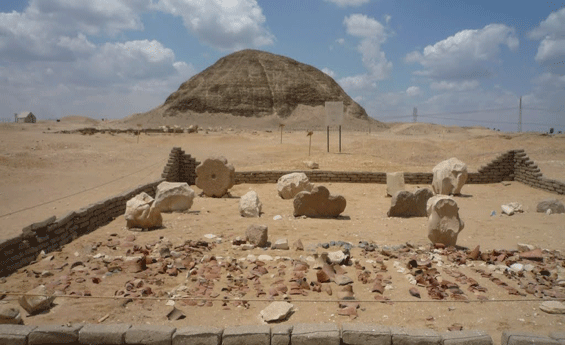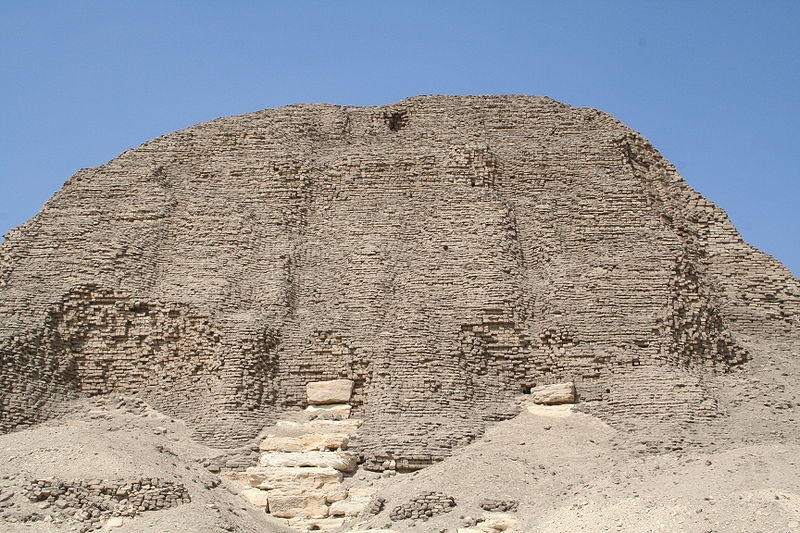Monuments Sight Seeing Attractions Egypt Zawyet elAryanPyramids
Monuments Sight Seeing Attractions Egypt Zawyet elAryanPyramids is a village situated about 2km south of the Giza Plateau, halfway between Giza and Abusir on the west bank of the Nile.
This is the rather neglected site of two unfinished pyramids of Old Kingdom date.
The Pyramid of Khaba
The pyramid at the southern end of the site is known as the ‘Layer Pyramid’ and has been attributed to king Khaba of Dynasty III, probably a successor of Sekhemkhet.
The pyramid was investigated by the Italian archaeologist Alessandro Barsanti in 1900, but the owner of the structure was unknown until Reisner’s American Expedition excavated the pyramid and some of the mastaba tombs in the area in the early part of the 20th century.
Here he found fragments bearing the name of Khaba as well as some pieces of pottery bearing the name of Narmer, which led him to suggest a Dynasty II date for the structure.
The southern pyramid at Zawyet el-Aryan is locally called ‘Haram el-Meduwara’ or the ’round pyramid’, due to its ruined condition and diminutive size.

The base of the pyramid was about 84m square and the subtructure is very similar to that of Sekhemkhet’s unfinished pyramid at Saqqara.
Khaba’s pyramid
was conceived as a step pyramid with a core built with sloping layers of masonry.
Only the lower part of the first step remains of what may have been intended to be a five, six or seven stepped structure, its height today rising to only 16m.
No trace of a limestone casing from the pyramid has been found which tends to support the view that the pyramid was never completed.
The subterranean chambers were entered near the north-east corner where a staircase continues in a westwards direction as a passage which then turns south at the bottom of a vertical shaft.
Another unfinished passage leads from higher in the shaft in the same direction.
The lower passage leads to another staircase and an empty burial chamber.
On the northern side of the vertical shaft there were thirty two store-rooms which also proved to be empty.
The area has never been thoroughly investigated and is now inaccessible because it is within a military zone.

Reisner’s American team excavated a large mastaba to the north of the Layer Pyramid, identified as Mastaba Z-500 and it was here that the Horus name of Khaba was found on alabaster vases.
Although these artefacts, in addition to the stylistic dating of the pyramid lead many Egyptologists to attribute the monument to Khaba, the owner is by no means certain.
The Northern Pyramid
Little remains today of another structure, assumed to be a second unfinished pyramid at Zawyet el-Aryan.
Monuments Sight Seeing Attractions Egypt Zawyet elAryanPyramids
This was also excavated by Barsanti in 1903, who discovered only a huge sloping trench leading to a pit.
Traces of a square platform measuring about 200m square indicates that if the pyramid had been completed it would have been similar in size to Khafre’s monument at Giza.
Stylistically this would give the structure a date of Dynasty IV, probably between the reigns of Djedefre and Khafre.
The remaining elements are said to resemble Djedefre’s pyramid at Abu Rawash.
Large blocks of limestone and granite lie on the floor of the trench and may have been intended for use in the burial chamber.
At the bottom of the trench there was a huge oval pink granite sarcophagus, which may or may not belong to the structure.
Significantly, Petrie found fragments of a similar styled sarcophagus while excavating Djedefre’s complex at Abu Rawash.
During Barsanti’s excavations, archaeologists were puzzled when the trench filled with rainwater which very quickly drained to about a metre deep, suggesting that there may have been an undiscovered passage or chamber beneath the trench.
Unfortunately the structure has never been further investigated because of its inaccessibility in the military zone.
There have been many candidates proposed for the ownership of this unfinished monument which, had it been completed, may have rivalled some of the greatest pyramids of the Old Kingdom.
Most Egyptologists currently date the structure to Dynasty IV.
Evidence put forward to support this dating include the use of large blocks of stone, the oval granite sarcophagus and the size of the structure’s base.
Masons marks with the king’s name have been found on some of the blocks.
These have been difficult to interpret except that the name was enclosed in a cartouche which suggests the ruler must have come after Huni (the last king of Dynasty III), who was the first known king to write his name this way.
Many now suggest that it was a structure belonging a king coming between Djedefre and Khafre, perhaps a son of Khufu or Djedefre who reigned for only a very short period.


